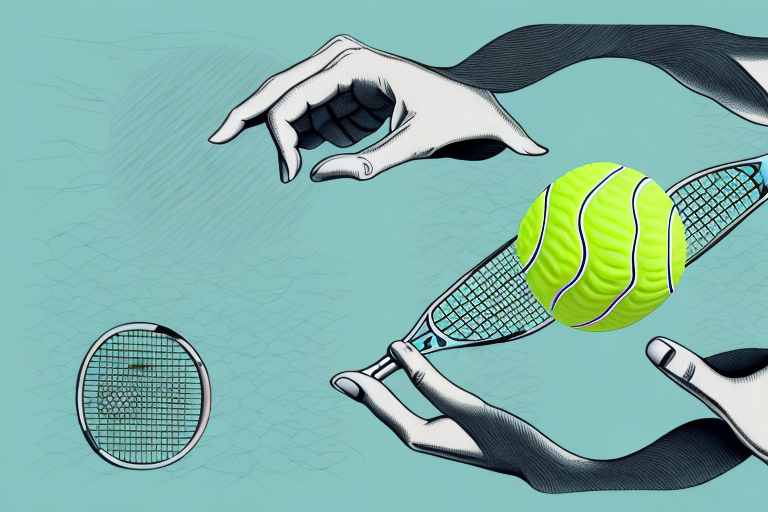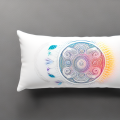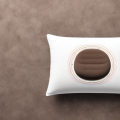Are you experiencing pain and stiffness in your neck and shoulders? If so, you are not alone. Neck and shoulder pain is a common complaint that can affect your ability to work, exercise, and even sleep. While there are several causes of neck and shoulder pain, one effective self-care technique involves using a tennis ball to target trigger points, also known as muscle knots. In this article, we will explore the science behind tennis ball therapy and provide you with the information you need to relieve your neck and shoulder pain.
Understanding Trigger Points: What They Are and How They Contribute to Pain
Trigger points are highly sensitive areas within your muscles that can cause pain, stiffness, and even referred pain in other parts of your body. These areas can be compared to knots in a piece of rope or a balled-up piece of tissue paper. When trigger points form, they create tight bands within the muscle that can restrict blood flow and cause inflammation. This can lead to pain and discomfort in the affected area, as well as surrounding areas.
Trigger points can be caused by a variety of factors, including poor posture, overuse of muscles, injury, and stress. They are commonly found in the neck, shoulders, back, and hips, but can occur in any muscle group. Treatment for trigger points may include massage, stretching, and physical therapy. In some cases, trigger point injections or dry needling may be recommended. It is important to address trigger points promptly, as they can lead to chronic pain and decreased mobility if left untreated.
How Tennis Ball Therapy Works: The Science Behind It
Tennis ball therapy works by applying pressure to trigger points in your muscles. By doing so, you can release the tension and improve blood flow to the affected area. This can help reduce pain and improve your range of motion. When you apply pressure to a trigger point, you may feel a little discomfort. However, the discomfort should not be intolerable. If it is, you may need to seek professional help.
Additionally, tennis ball therapy can also help improve your posture. Poor posture can lead to muscle imbalances and tension, which can cause pain and discomfort. By using tennis ball therapy to release tension in your muscles, you can improve your posture and reduce the risk of developing chronic pain or injuries. It is important to note that tennis ball therapy should not be used as a substitute for professional medical advice or treatment. If you have any concerns about your health, it is always best to consult with a healthcare professional.
Finding the Right Tennis Ball: Size and Firmness Matters
When using a tennis ball for therapy, it is important to choose the right size and firmness. Generally, a standard tennis ball is a good option, but you may want to use a softer ball if you are experiencing a lot of pain. Additionally, it is important to make sure that the ball is not too small or too large for your needs. A ball that is too small may not provide enough pressure, while a ball that is too large may be too difficult to maneuver.
Another factor to consider when choosing a tennis ball for therapy is the texture of the ball. Some tennis balls have a smoother surface, while others have a more textured surface. A textured ball can provide additional stimulation and help to release tension in the muscles. However, if you have sensitive skin or are using the ball on a particularly tender area, a smoother ball may be a better option to avoid any discomfort or irritation.
Proper Technique: How to Use a Tennis Ball to Target Trigger Points
The following steps will help you use a tennis ball to target trigger points:
- Lie down on the floor and place the tennis ball under your neck or shoulder.
- Apply pressure to the ball using your body weight.
- Roll the ball around until you find a trigger point.
- Hold the ball in place for 15-30 seconds, or until you feel the tension release.
- Repeat on other areas as needed.
It is important to note that using a tennis ball to target trigger points can be uncomfortable or even painful at times. It is recommended to start with light pressure and gradually increase as your body becomes accustomed to the sensation. Additionally, it is not recommended to use a tennis ball on areas with open wounds or bruises. If you experience any sharp or intense pain, stop immediately and consult with a healthcare professional.
Common Trigger Points in the Neck and Shoulders
There are several trigger points in the neck and shoulder area that you can target with a tennis ball. These include:
- The suboccipital muscles at the base of your skull.
- The upper trapezius muscle, which runs from your neck to your shoulder.
- The levator scapulae muscle, which runs from the side of your neck to your shoulder blade.
- The rhomboids, which are located between your shoulder blades.
It’s important to note that trigger points in the neck and shoulders can cause a variety of symptoms, including headaches, neck pain, and shoulder pain. These trigger points can be caused by poor posture, stress, or overuse of the muscles. By targeting these trigger points with a tennis ball, you can help alleviate these symptoms and improve your overall comfort and mobility.
Benefits of Tennis Ball Therapy: Pain Relief and Improved Range of Motion
When used properly, tennis ball therapy can provide several benefits. These include:
- Pain relief
- Improved range of motion
- Reduced inflammation
- Improved blood flow
- Relaxed muscles
Additional Tips for Relieving Neck and Shoulder Pain with Tennis Ball Therapy
Here are some additional tips for using tennis ball therapy to relieve neck and shoulder pain:
- Start slowly and gradually increase the pressure.
- Use a combination of rolling and static pressure techniques.
- Take deep breaths while applying pressure to help relax your muscles.
- Use tennis ball therapy in conjunction with other self-care techniques, such as stretching and heat therapy.
When to Seek Professional Help: Signs Your Pain Requires Medical Attention
If your pain persists or worsens, you may need to seek professional help. Signs that your pain requires medical attention include:
- Pain that is severe or unbearable
- Pain that is accompanied by weakness, numbness, or tingling
- Pain that does not improve with self-care techniques
- Pain that is accompanied by fever or other symptoms
Combining Tennis Ball Therapy with Other Self-Care Techniques for Optimal Results
To get the best results, it is recommended that you combine tennis ball therapy with other self-care techniques. Some effective techniques to try include:
- Stretching exercises to improve flexibility and range of motion
- Heat therapy to relax your muscles and improve blood flow
- Cold therapy to reduce inflammation and pain
- Massage therapy to release tension and reduce pain
Using a tennis ball to target trigger points can be an effective way to relieve your neck and shoulder pain. By following the tips and techniques discussed in this article, you can improve your range of motion, reduce inflammation, and experience relief from pain and discomfort. As always, if your pain persists or worsens, it is important to seek professional help.





